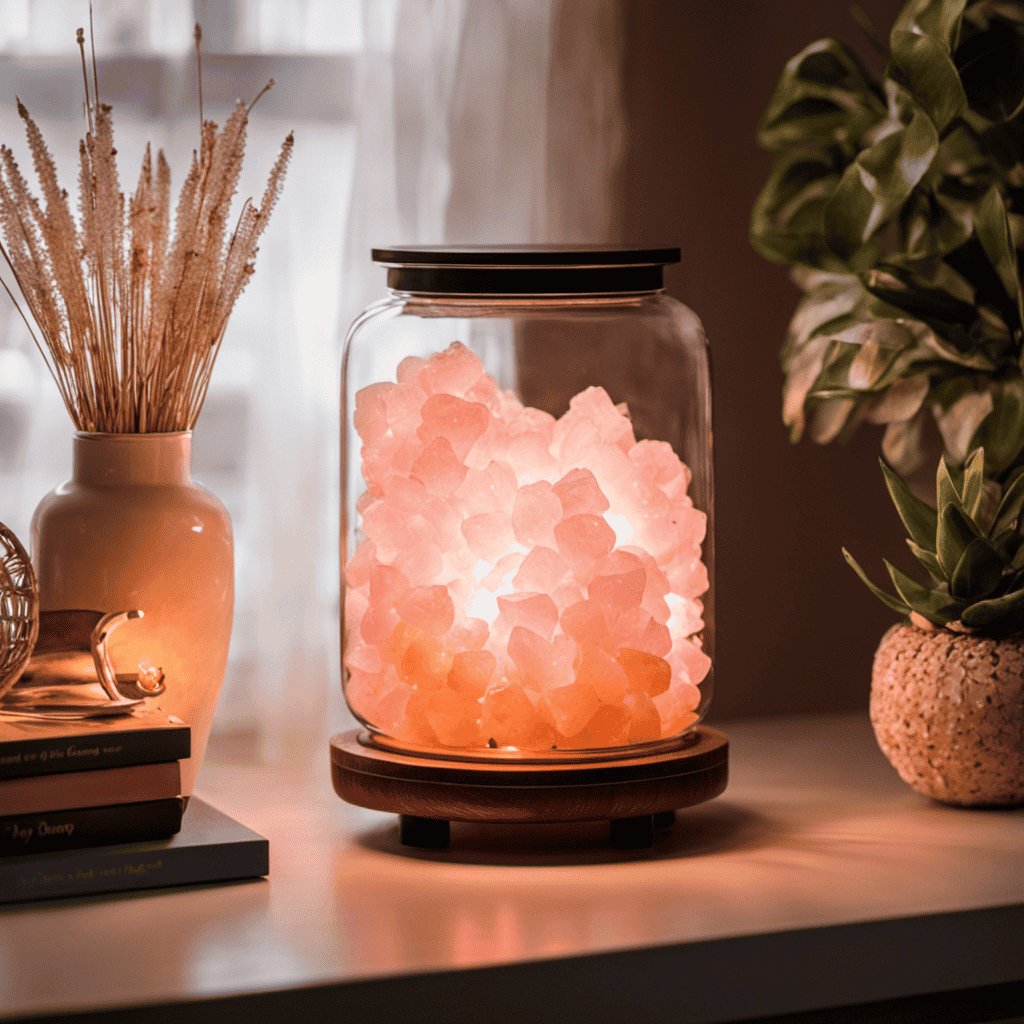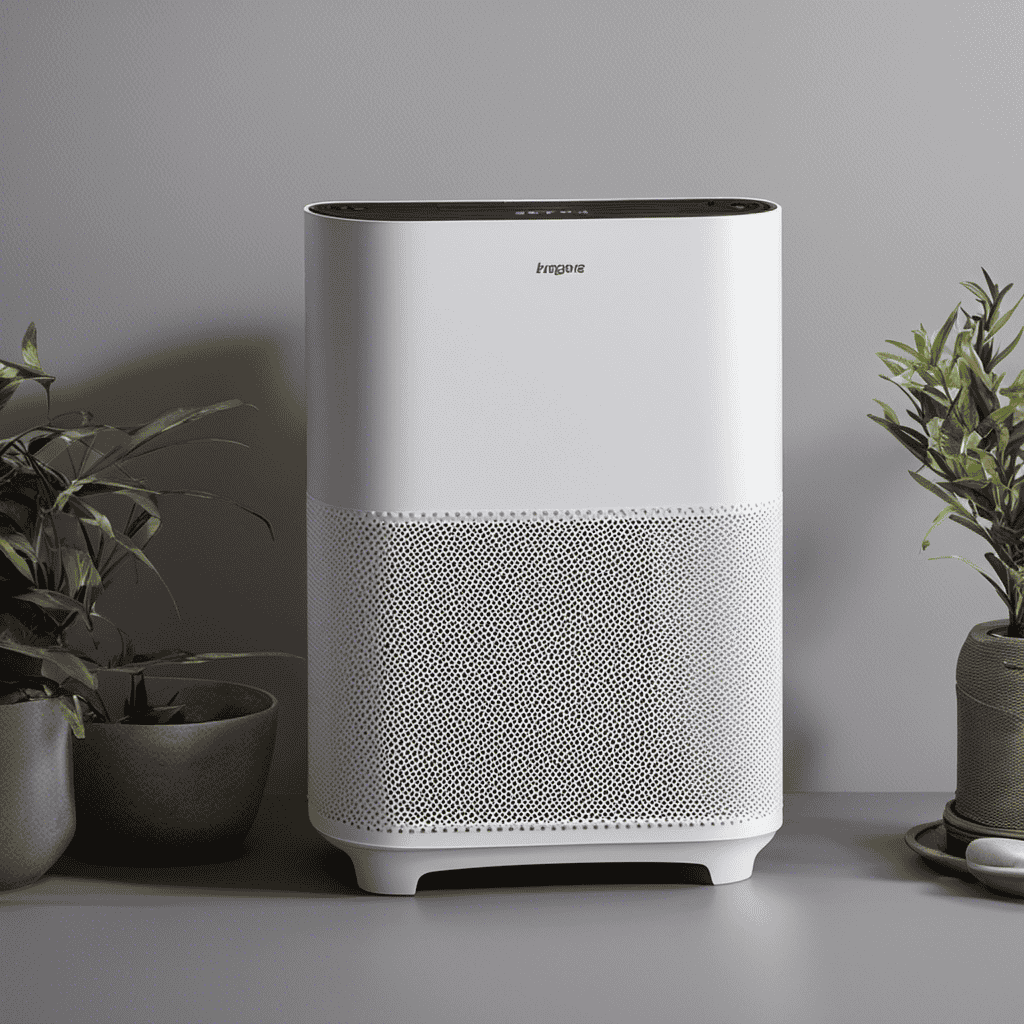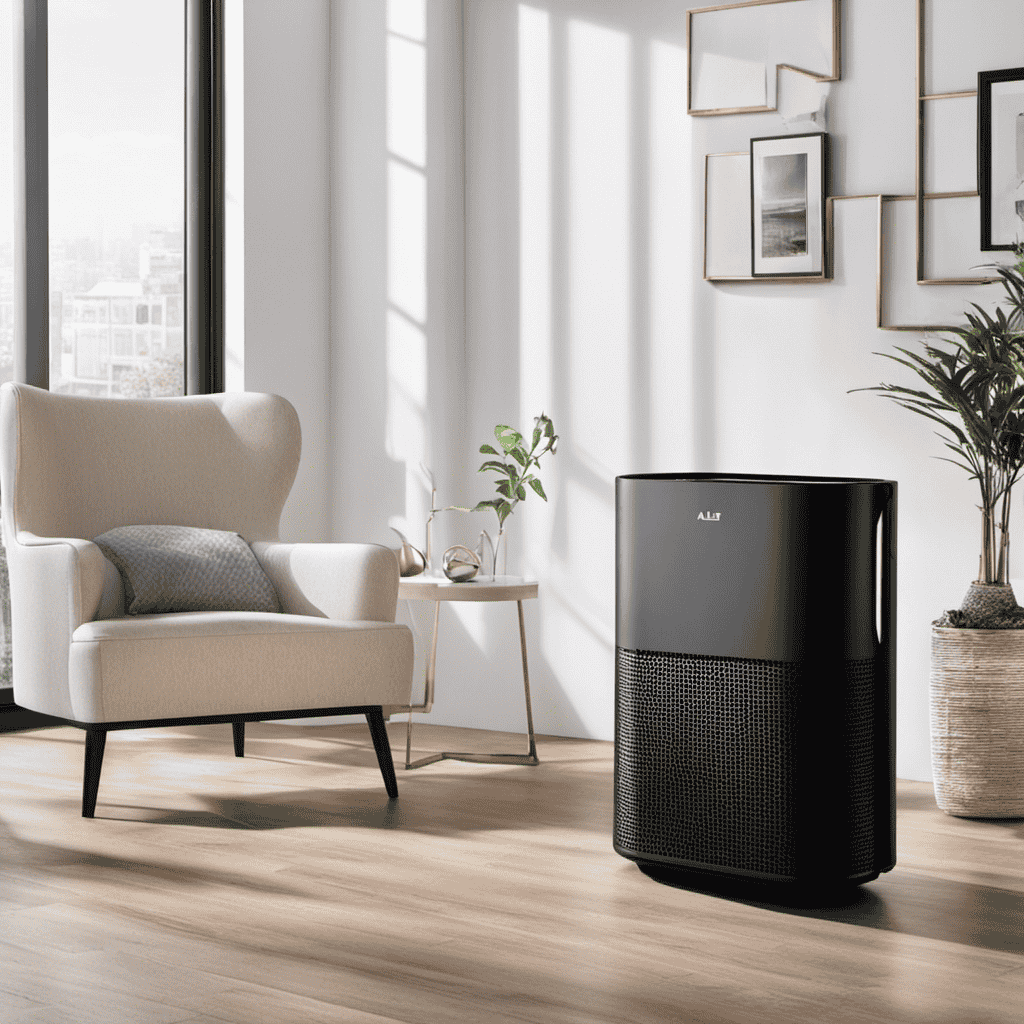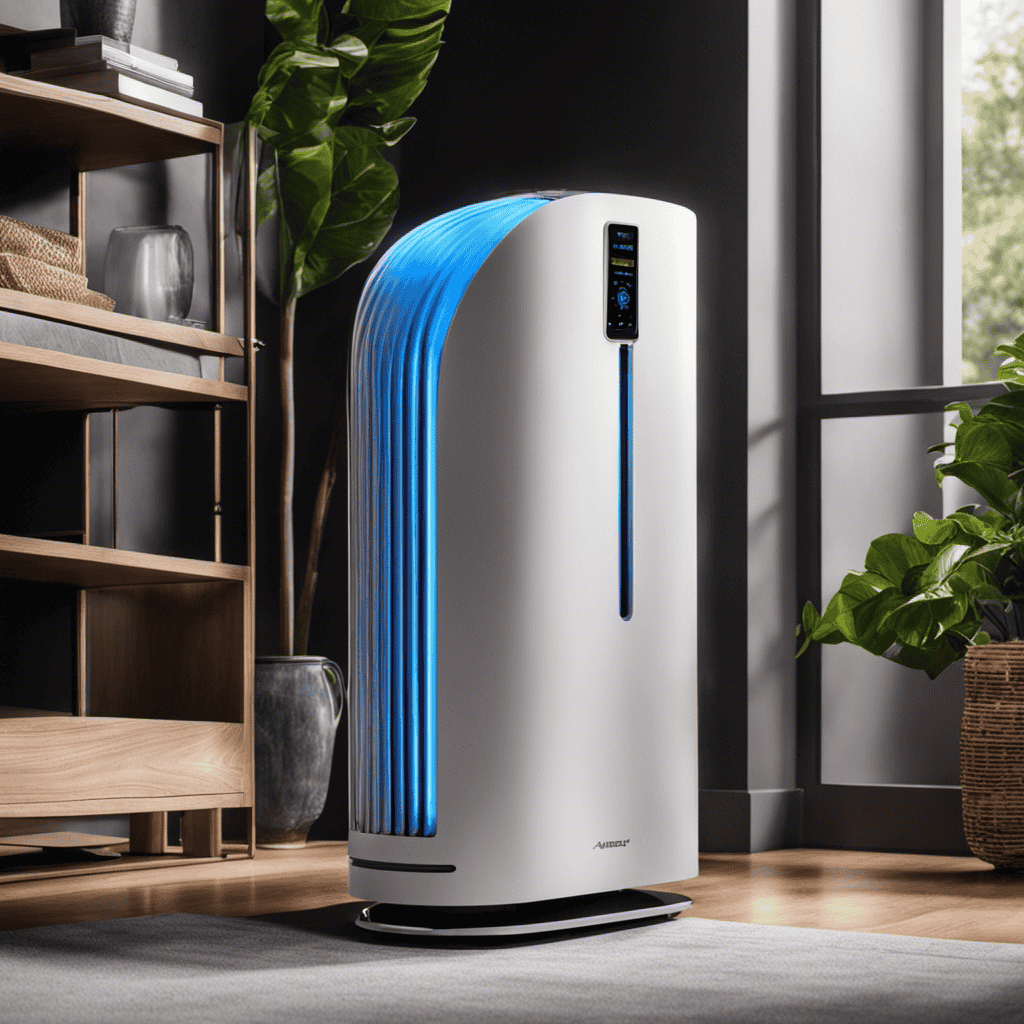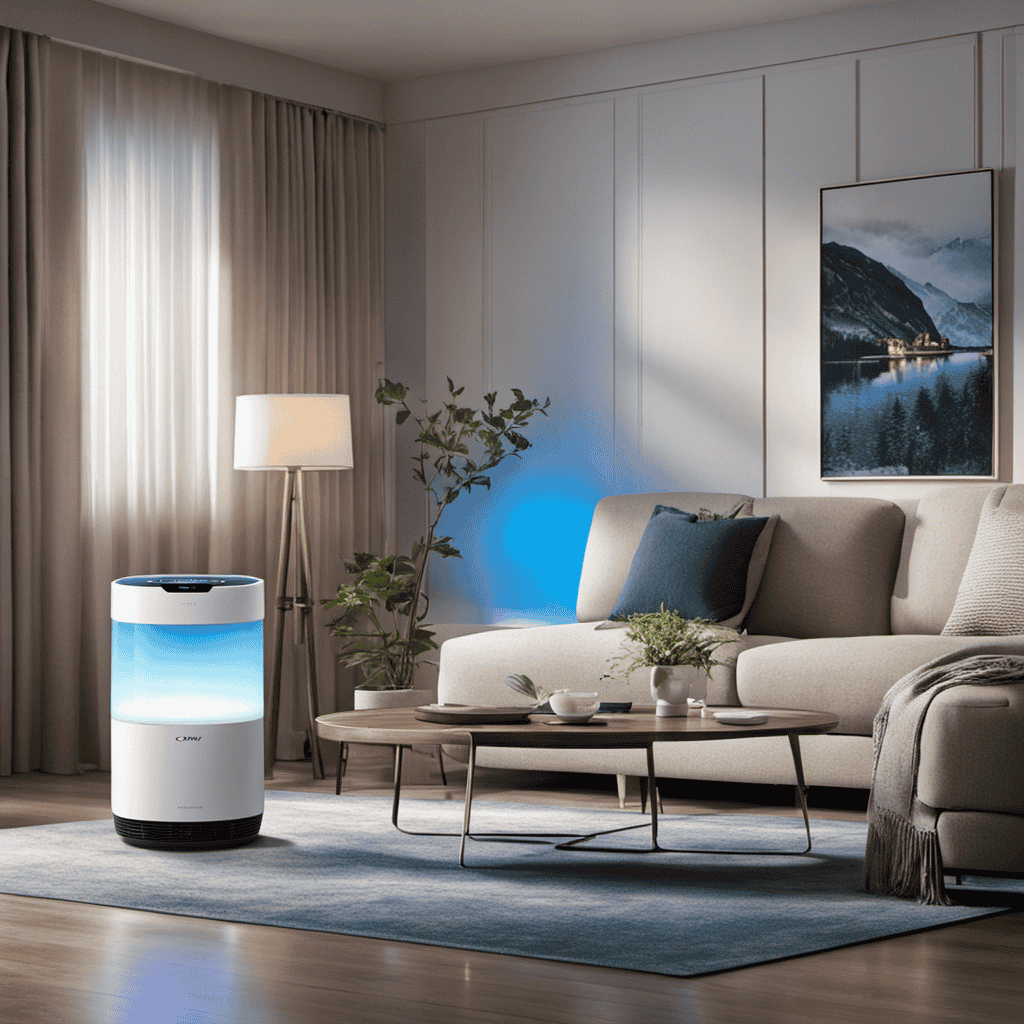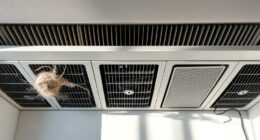Were you aware that the air in our homes may be up to five times more contaminated than the air outdoors? This statistic is quite alarming, however, the positive news is that there is a straightforward and affordable solution: a salt air purifier.
In this article, I’ll show you how to make your own salt air purifier using materials you probably already have at home. With just a few easy steps, you can improve the air quality in your home and breathe easier.
Let’s get started!
Key Takeaways
- Salt air purifiers can effectively remove allergens from the air.
- Salt therapy has been used for centuries as a natural air purification method.
- Salt releases negative ions that attach to particles and make them fall to the ground, reducing respiratory inflammation.
- Regular maintenance and cleaning of the salt air purifier, including replacing the saltwater solution, is necessary for optimal performance.
Benefits of Using a Salt Air Purifier
One of the benefits of using a salt air purifier is that it helps to remove allergens from the air. Salt therapy, also known as halotherapy, has been used for centuries as a natural air purification method. When salt is heated, it releases negative ions into the air. These ions attach themselves to particles such as dust, pollen, and pet dander, causing them to become heavier and fall to the ground. This process effectively removes allergens from the air, making it safer and healthier to breathe.
In addition to allergen removal, salt air purifiers also help to reduce respiratory inflammation and improve overall lung function. By incorporating salt therapy into your home, you can create a cleaner and more purified living environment.
To achieve this, you will need a few necessary materials and equipment.
Necessary Materials and Equipment
To create a salt air purifier, you’ll need a glass jar, a small fan, activated charcoal, and rock salt.
Safety precautions and cost-effective options are important considerations when making your own purifier.
When working with a glass jar, ensure it is clean and free from any cracks or chips to prevent any accidents. Additionally, handle the activated charcoal and rock salt with care to avoid any spills or inhalation.
As for cost-effective options, you can look for affordable glass jars at thrift stores or repurpose one you already have at home. Activated charcoal can often be found at pet stores or online at a reasonable price. Rock salt can be purchased in bulk, which can be more cost-effective in the long run.
Step-by-Step Guide to Building Your Salt Air Purifier
When building a salt air purifier, you’ll first need to gather the necessary materials and equipment. Here’s a step-by-step guide to help you construct your own salt air purifier:
-
Choose a suitable container: Look for a container that is large enough to hold the salt and water mixture while allowing for proper airflow.
-
Select the right salt: Use high-quality salt, such as Himalayan pink salt or sea salt, as they contain beneficial minerals and have superior air-purifying properties.
-
Create a saltwater solution: Dissolve the salt in water to create a saline solution. The concentration may vary depending on the size of the container and the desired level of air purification.
Tips for Proper Maintenance and Cleaning
Here’s a quick tip to keep your salt air purifier running efficiently: regularly clean the container and replace the saltwater solution to ensure optimal air purification.
Proper maintenance and cleaning are essential for keeping your salt air purifier in top condition. One of the most common maintenance issues is the buildup of residue in the container. To clean it, you can use a mild detergent or vinegar solution and scrub the container gently. Avoid using harsh chemicals as they can damage the material.
Additionally, regularly check for any leaks or cracks in the container and replace it if necessary.
Remember to also replace the saltwater solution every few months to maintain the purifier’s effectiveness.
Using the best cleaning products and addressing common maintenance issues will help ensure that your salt air purifier continues to provide you with clean and fresh air.
Additional Ways to Improve Indoor Air Quality
One way you can improve indoor air quality is by regularly changing the filters in your HVAC system. This helps to remove dust, allergens, and other pollutants from the air.
In addition to changing filters, there are other ways to further enhance the air quality in your home:
-
Use an air purifier: Air purifiers are devices designed to remove contaminants from the air. They can help reduce allergens, odors, and other pollutants, improving the overall air quality in your home.
-
Open windows: Allowing fresh air to circulate in your home can help dilute indoor pollutants and improve ventilation.
-
Add natural air purifiers: Some plants, such as spider plants and peace lilies, have air-purifying properties. Adding these plants to your home can help naturally remove toxins from the air.
Frequently Asked Questions
How Long Does It Take for a Salt Air Purifier to Start Working?
It typically takes a salt air purifier a few hours to start working. The effectiveness of a salt air purifier lies in its ability to release negative ions, which can have numerous benefits for air quality.
Can a Salt Air Purifier Remove All Types of Indoor Air Pollutants?
Yes, a salt air purifier can effectively remove many types of indoor air pollutants. The benefits of using a salt air purifier include improved air quality, reduced allergens, and a healthier living environment.
Is It Safe to Use a Salt Air Purifier Around Pets or Children?
It is important to consider safety concerns when using salt air purifiers around pets and children. While generally safe, it is recommended to keep them out of reach and supervised to prevent accidental ingestion or inhalation of salt particles.
Can a Salt Air Purifier Help With Respiratory Conditions Like Asthma or Allergies?
A salt air purifier can greatly improve respiratory conditions like asthma and allergies. Its effectiveness in removing airborne pollutants and allergens is astounding. The benefits of using a salt air purifier are scientifically proven and can greatly enhance air quality.
Are There Any Potential Side Effects or Risks Associated With Using a Salt Air Purifier?
When using a salt air purifier, potential side effects and risks are minimal. The effectiveness of the purifier depends on proper maintenance and usage. It is important to follow instructions and monitor air quality.
Can I Make My Own Salt Air Purifier at Home Using Ionizing Technology?
Yes, you can make your own salt air purifier at home using ionizing technology. By placing a salt lamp near a source of heat, the salt begins to generate negative ions, which can help remove airborne contaminants. This is how ionizing works to purify the air in your home.
Conclusion
Well, who would have thought that making your own salt air purifier could be so simple and effective?
It’s truly a game-changer in improving indoor air quality. With just a few materials and some basic steps, you can create a device that not only removes harmful particles from the air but also adds a touch of irony to your room decor.
So, why not give it a try and enjoy the benefits of cleaner air while adding a unique scientific touch to your home?
